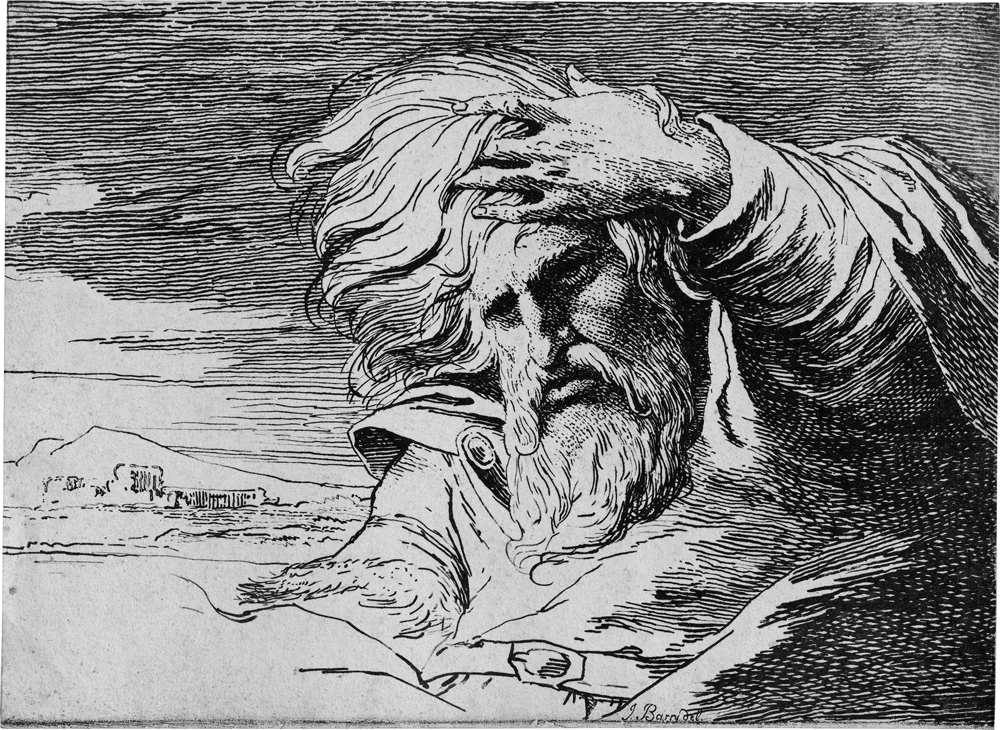Loading the page ...
James Barry
(1741 Cork – 1806 London)
King Lear. Pen lithograph, from Specimens of Polyauthography. 23.2 x 31.8 cm. Circa 1803. Pressly 38.
The young James Barry’s first historical paintings attracted the attention of the Irish author and philosopher, Edmund Burke, who invited him to London in 1764. Burke introduced the budding artist to Joshua Reynolds and Gilbert Stuart and paid for him to study in Rome for a number of years. After returning to London, Barry exhibited two paintings on biblical and mythological themes at the Royal Academy in 1771 and 1772, both of which were poorly received by the critics. Although the lack of recognition accorded to his works meant he received no commissions for quite some time, he was nevertheless admitted to the Academy in 1773. In 1775 Barry published An Inquiry into the Real and Imaginary Obstructions to the Acquisition of the Arts in England, a provocative essay directed primarily against Winckelmann’s classical theory of art. Barry remained an eccentric and visionary artist throughout his life. His historical paintings, distinguished by the outstanding originality and extravagance of their iconography, are imbued with an unconventional, sombre lyricism which anticipates the aspirations of the Romantic period. Barry was a loner in his time and spent the last years of his life in complete isolation and abject poverty.
This unorthodox depiction of Shakespeare’s King Lear is the only instance of Barry’s engagement with the then new technique of lithography. A rare impression, it was included in 1803 in the famous Specimens of Polyauthography, the earliest series of lithographs to appear in Britain. It incorporated works by Heinrich Füssli, Conrad Gessner and Benjamin West and was published by Philipp André (1800–1805) and James Heath (1757–1834). The reason for the unusual composition of the sheet is that Barry based his portrayal on a motif he used elsewhere in his works – the head of the tragic king is an excerpt from the 1774 oil painting of King Lear and Cordelia, of which Barry made several graphic reproductions in later years (see Pressly 5). The focus on the head and upper body of this impressive male figure gives the composition a tremendous dramatic expressiveness.
A superb, contrasting impression. Minorworks traces of handling, otherwise in excellent condition.
